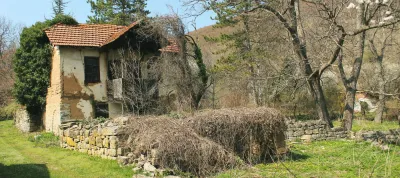General information
RDP Priority
- P6. Social inclusion and local development
RDP Focus Area
- 6B: Local development
RDP Measure
- M16: Cooperation
Beneficiary type
- Producer group / cooperative / farmer’s association
Summary
In 2021, six chambers of agriculture, together with land development and rural establishment companies (SAFER), collaborated on a project to reclaim uncultivated lands and expand agricultural areas. The project consisted of two phases.
The first phase involved conducting studies to identify uncultivated land in the SUD region and analysing the impact of urbanisation on agriculture. In the second phase, experimental actions were conducted locally to support policymakers in developing agricultural policies and facilitating dialogue between landowners and farmers.
Results
- Engaged 288 landowners in six micro-territories to discuss reclaiming uncultivated land, with 48 participating in meetings with project partners.
- Held three to four meetings per territory to facilitate interaction and experience sharing among farmers and landowners.
- Some territories continue to work on the project, expanding their focus to include developing local food systems and the support of local agriculture.

Promoter
Chamber of Agriculture of the SUD PACA Region
Funding
Total budget 253 576 (EUR)
EAFRD: 202 861 (EUR)
National/Regional: 50 715 (EUR)
Ressources
Documents
Liens
Context
In 2020, multiple chambers of agriculture in the SUD region of France responded to a national call for projects centred on reclaiming unused agricultural land. The initial project aimed to assess the extent of uncultivated land and determine the land needs of farmers. Given the increasing pressure on land availability due to urban development and population growth in southern France, this study was crucial for shaping local and regional policies.
Subsequently, six chambers of agriculture in the SUD region partnered with the SAFER, a public limited company dedicated to promoting agriculture, safeguarding the environment, landscapes and natural resources like water, and assisting local authorities in their land initiatives. Together, they launched a new project funded by the European Agricultural Fund for Rural Development (EAFRD) to transition from a theoretical phase (data analysis, etc.) to an operational phase by collaborating with local municipalities to rehabilitate unused land.
Objectives
The aims of this project were:
- In the theoretical phase, to further analyse the results of the 2020 project. The EAFRD project aimed to identify and assess lands suitable for agriculture, while SAFER quantified urbanised lands that could be used for agricultural purposes.
- In the operational phase, to explore the agricultural policies of different territories in collaboration with local stakeholders. Each chamber of agriculture selected a specific territory, which could encompass one or multiple municipalities, to focus on.
Activities
The project activities included the following:
- Theoretical Phase: each chamber of agriculture identified uncultivated lands within their territory and assessed their potential for agricultural use. The SAFER team then conducted a study to determine the reasons for land remaining uncultivated and the impact of this on agricultural activity. They also estimated the amount of land currently used for leisure or recreational purposes that could be utilised for agriculture.
- Operational Phase: each county, represented by a chamber of agriculture, selected a specific territory (municipality or multiple municipalities) to collaborate with. They engaged with elected officials and government officials to understand existing agricultural policies and identify opportunities for intervention. Chambers chose territories with varying levels of commitment to land reclamation, ranging from highly engaged to those new to the issue. Specific actions were implemented in each territory:
- Identifying landowners and contacting them via email, phone or mail.
- Holding meetings with responsive landowners.
- Facilitating meetings between landowners and farmers to explore collaboration and utilise new lands for agriculture.
This operational phase also involved consultations with farmers to determine their needs and to establish objectives for experimentation in each territory.
Main results
- Conducted a regional study to identify uncultivated land and its characteristics, as well as a study by SAFER on urbanisation's impact on agriculture.
- Engaged with 288 landowners in six micro-territories to discuss reclaiming uncultivated land, with 48 participating in meetings and exchanges with project partners.
- Held three to four meetings per territory, facilitating interaction and experience sharing among farmers and landowners.
- Scheduled a final event in June 2023 to showcase project outcomes, bringing together project municipalities and local farmers.
- After the project ended, several territories continued to work on the topic in collaboration with chambers of agriculture. Some expanded their approach by initiating discussions on the preferred type of agriculture and food systems. The EAFRD project served as an initial step towards a broader reflection on desired territory and landscapes by regional stakeholders.
Key lessons
- The project played a role in establishing a shared understanding of uncultivated land and how to collaborate with local stakeholders to promote agriculture in their regions. The territories varied in their level of experience, with some lagging behind while others were highly developed. This diversity allowed for discoveries and the transfer of tools already used by experienced territories. Ultimately, it enhanced the dialogue between the six chambers of agriculture and SAFE so that they can all better assist farmers and landowners based on an understanding of their specific needs.
